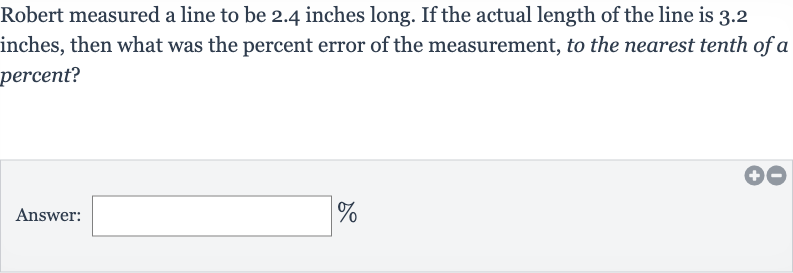AI tutor
Welcome to Bytelearn!
Let’s check out your problem:

Robert measured a line to be . inches long. If the actual length of the line is . inches, then what was the percent error of the measurement, to the nearest tenth of a percent?Answer: _________
Full solution
Q. Robert measured a line to be . inches long. If the actual length of the line is . inches, then what was the percent error of the measurement, to the nearest tenth of a percent?Answer: _________
- Understand percent error: Understand the concept of percent error. Percent error is a measure of how inaccurate a measurement is, relative to the true value. The formula for percent error is: Percent Error =
- Identify values: Identify the measured value and the true value.In this problem, the measured value is inches, and the true value is inches.
- Calculate absolute difference: Calculate the absolute difference between the measured value and the true value.Absolute difference = = = = inches
- Calculate percent error: Calculate the percent error using the formula.Percent Error = Percent Error =
- Perform division and multiplication: Perform the division and multiplication to find the percent error.Percent Error =
- Round percent error: Round the percent error to the nearest tenth of a percent. Since the percent error is already at a whole number, rounding to the nearest tenth of a percent does not change the value.
More problems from Percent error: word problems
QuestionGet tutor help
QuestionGet tutor help
QuestionGet tutor help
QuestionGet tutor help
QuestionGet tutor help
